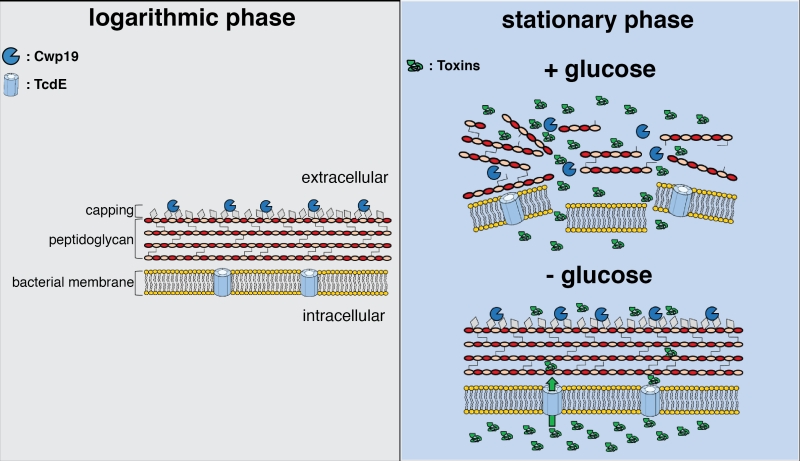Back to article: Toxin release mediated by the novel autolysin Cwp19 in Clostridium difficile
FIGURE 1: Illustration showing a model for Cwp19 activity and toxin release. Cwp19 is associated to the cell wall during logarithmic phase and active but is unable to induce cell lysis, due to peptidoglycan inaccessibility. We propose that the inability of Cwp19 to exert lytic activity is due to a protective capping of the peptidoglycan. Upon entry into stationary phase, C. difficile cells produce toxins and two different mechanisms mediate their release into the extracellular environment. These mechanisms seem to depend on the presence or absence of glucose in the environment. In presence of glucose, modifications in the cell wall composition will result in the exposure of uncapped peptidoglycan, making it available for Cwp19 to initiate cell wall degradation. This will lead to cell lysis and release of the intracellular content, including toxins, from the cytoplasm. In absence of glucose, cells remain protected from the lytic activity of Cwp19. High levels of toxins are produced in this condition and they are secreted through another mechanism involving the holin-like protein TcdE.

